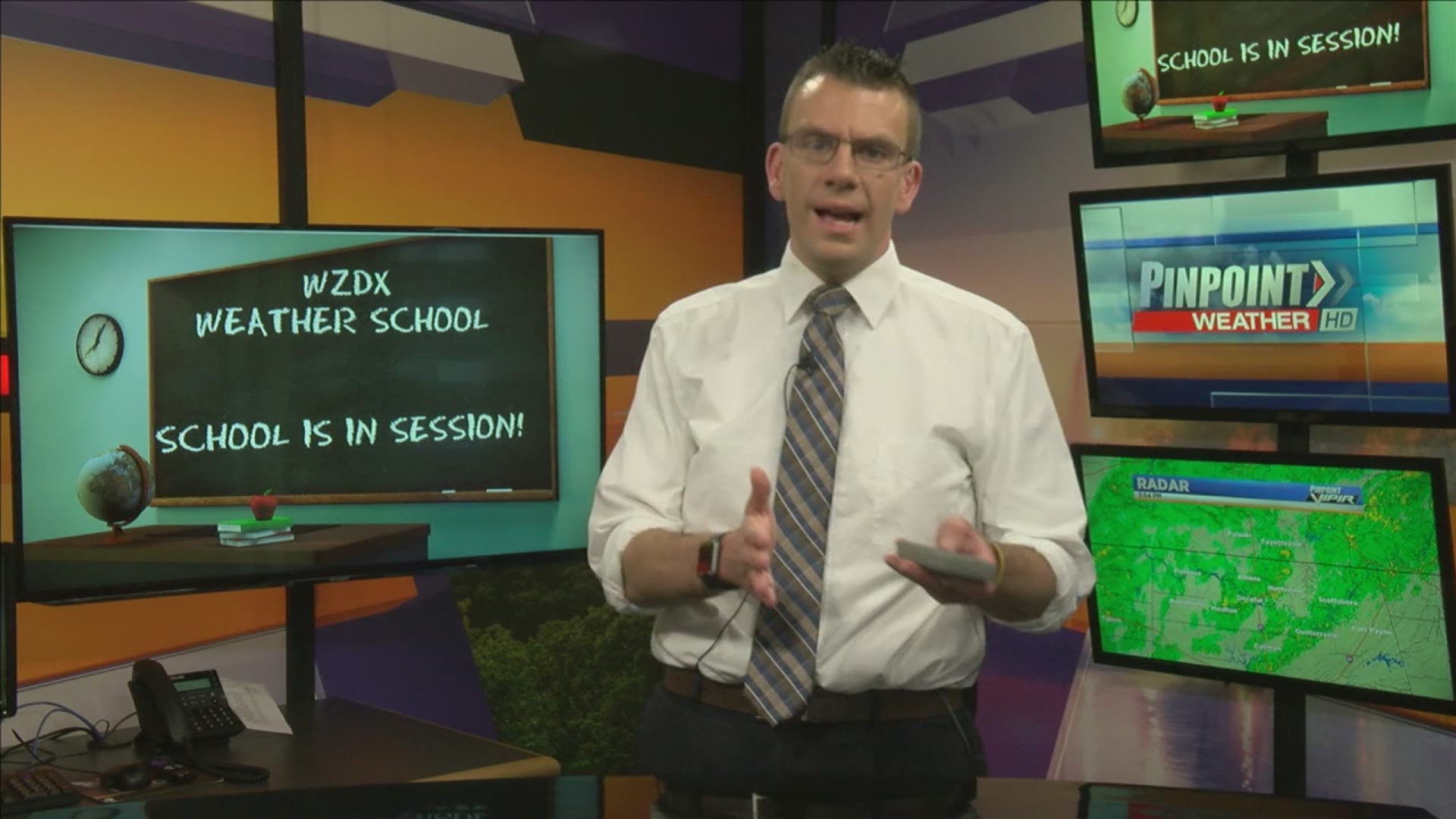HUNTSVILLE, Ala. — In the first lesson we discussed cloud formation, and then we took it one step further and discussed thunderstorm formation. You can find that lesson here.
Now today we take that another step further and discuss the development of tornadoes. A tornado is defined as a violent wind storm that takes on the form of a column of air. I took that definition from an old textbook.
In a severe weather setup, we have a warm moist unstable air mass coming from the south off the Gulf of Mexico. A boundary (usually a cold front) moves in from the west. On the other side of this front is dry cool air.
The cold front forces the warm air ahead of it to lift. This is because cold air is more dense than warm air. The warm air is from the south and the cold air is from the west. That along with a difference in speed because of friction at the surface creates wind shear. To this point we have winds from two different air masses moving at different speeds and direction as we go up in altitude.
That change in wind speed and direction with altitude is known as wind shear. That wind shear actually creates a horizontal rotation. That is rotation on the X-Axis. We still do not have a tornado.
Now we reference our updraft from the last lesson. If the updraft is strong enough it can take that horizontal rotation and make it verticle. Now our rotation is on the Y-Axis.
From this point, if the rotating collum of air stretches and the eventual funnel cloud makes contact with the ground then it is classified as a tornado.
Tornado strength is measured on the Enhanced Fujita (EF) scale from EF-0 to EF-5.

